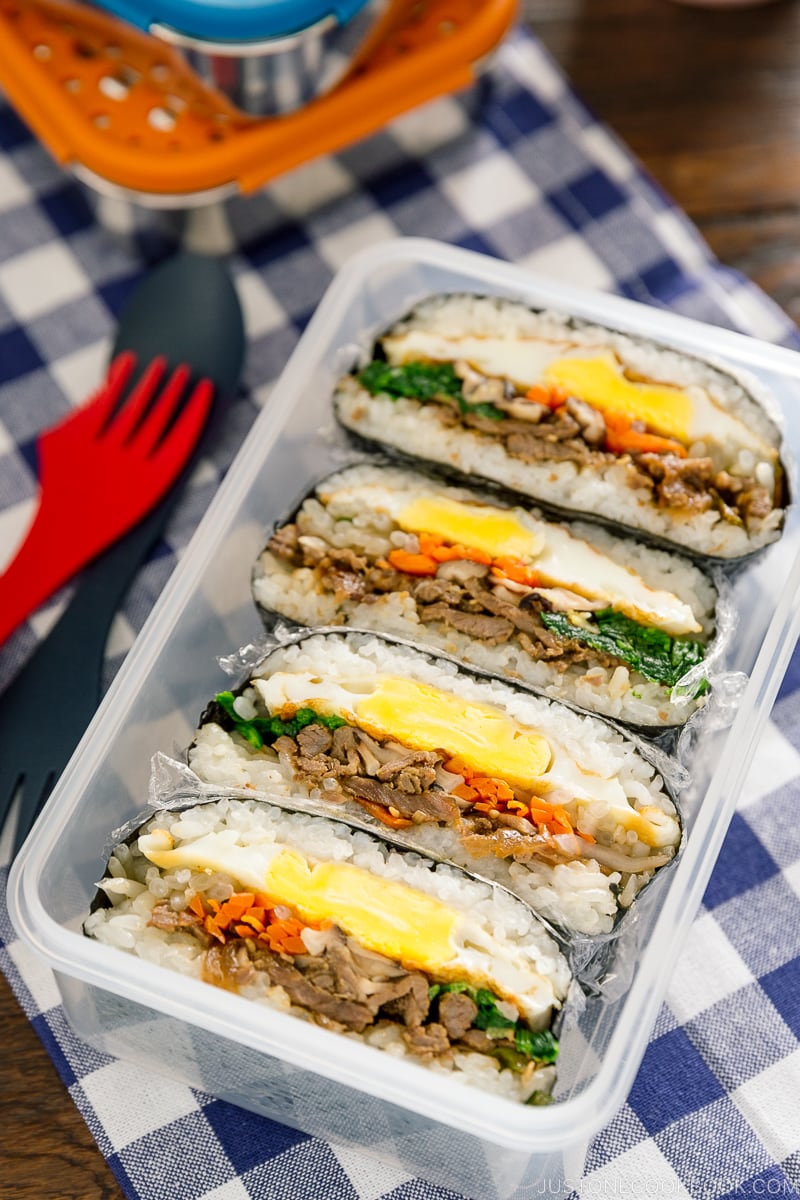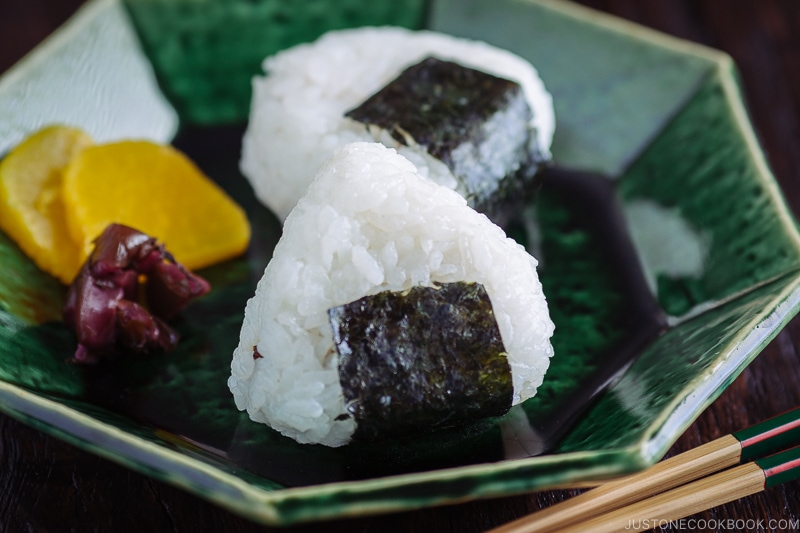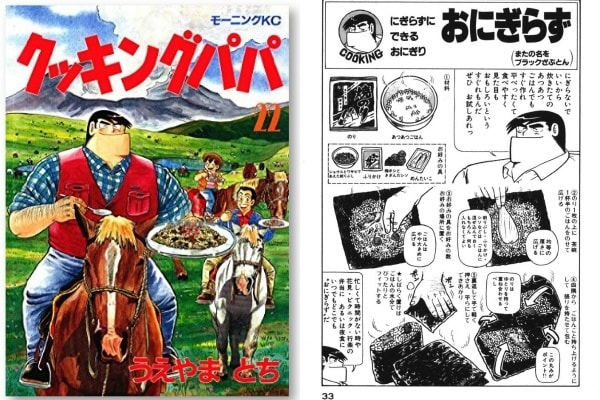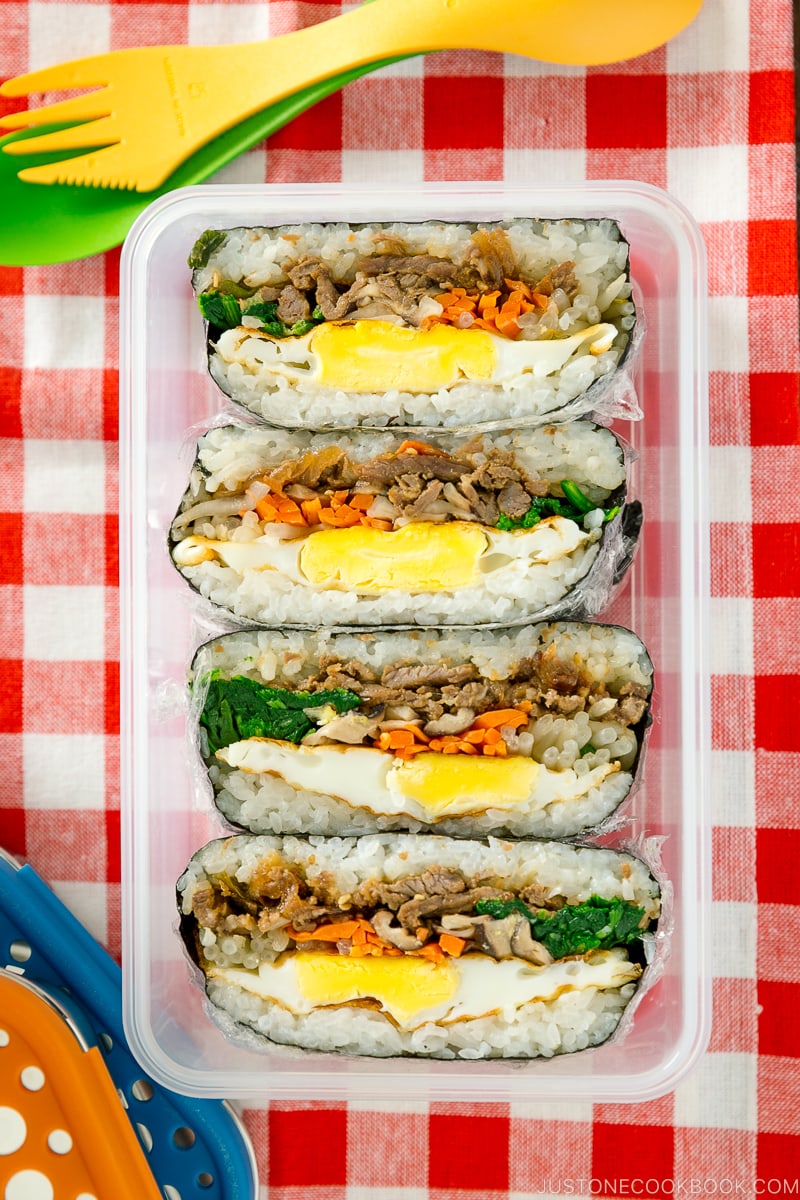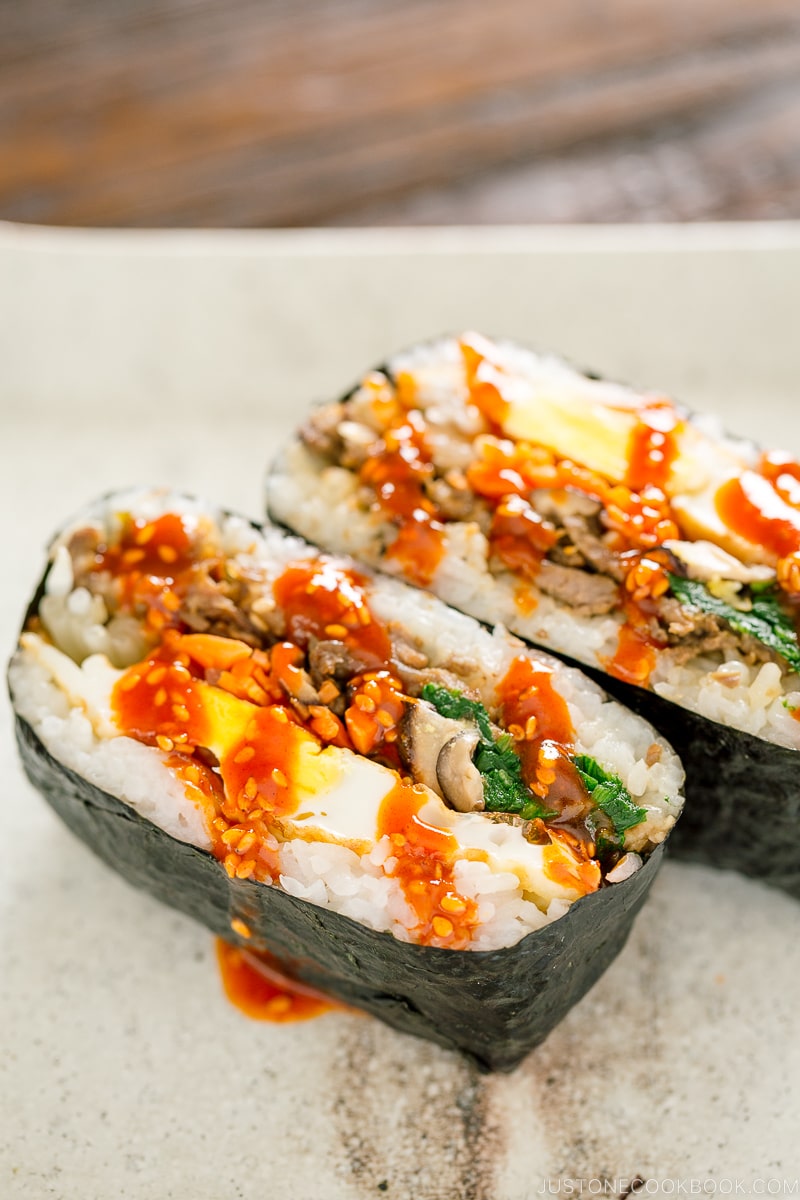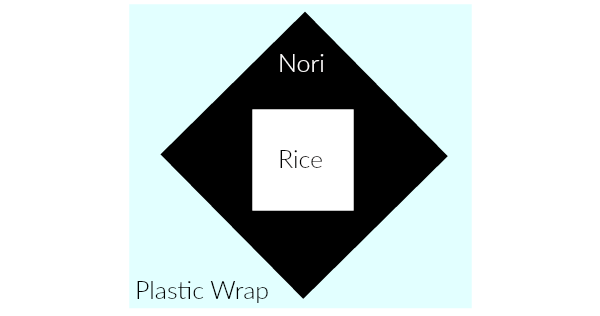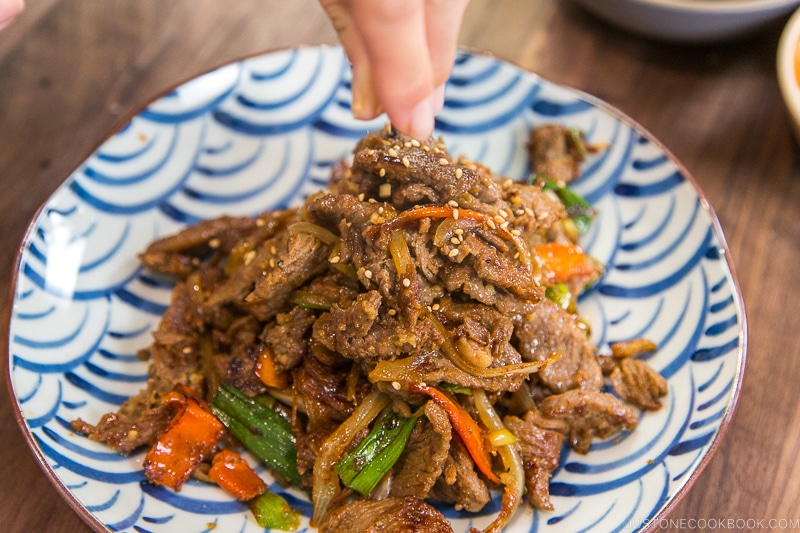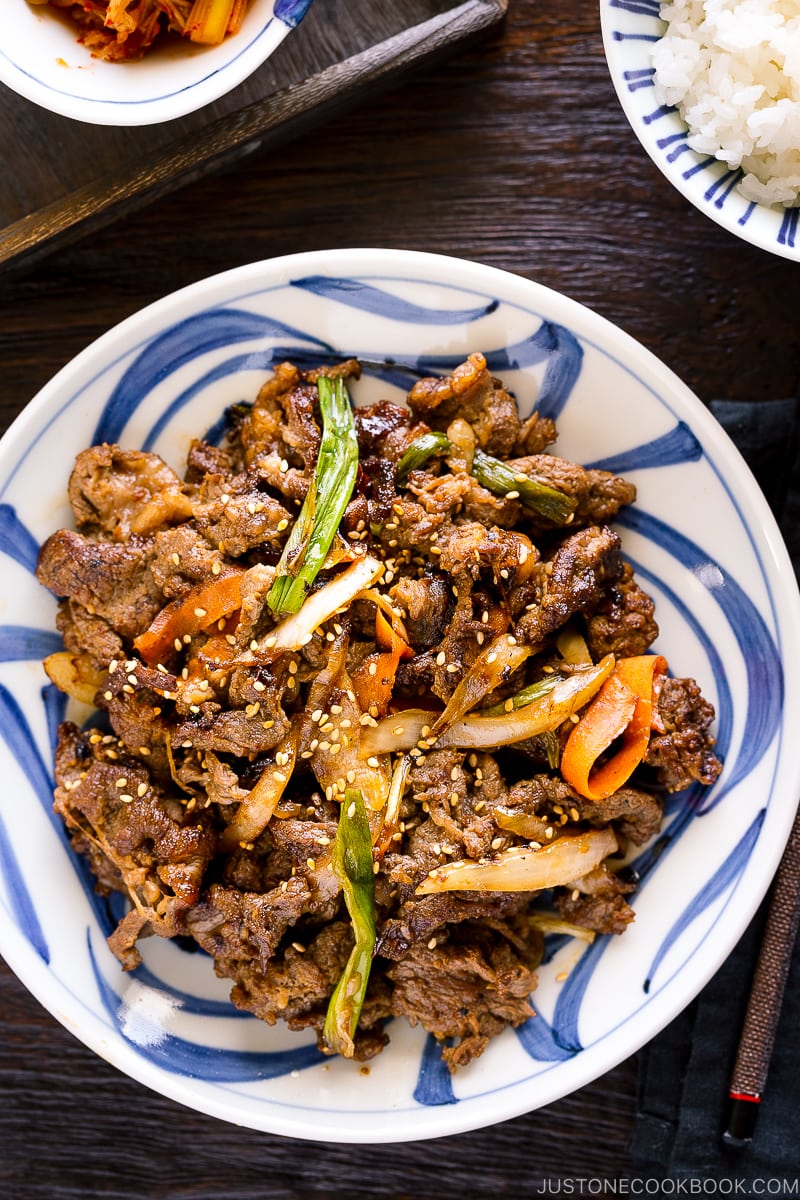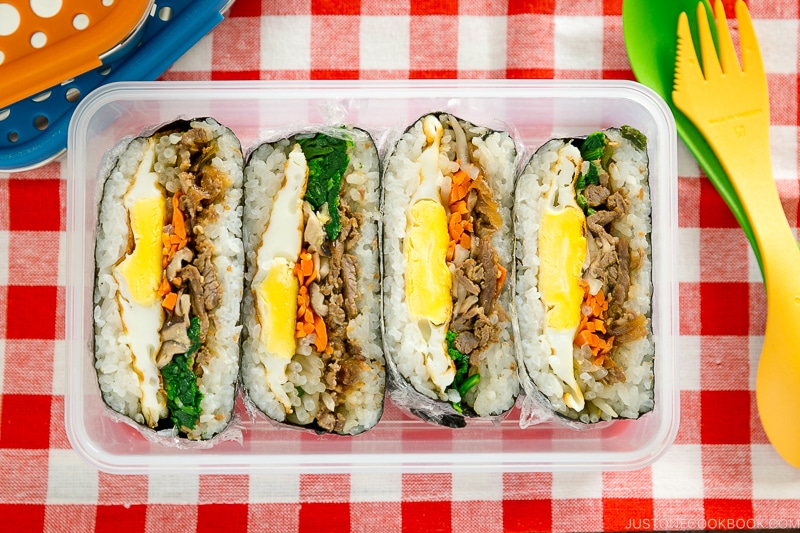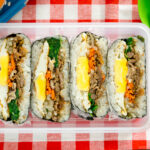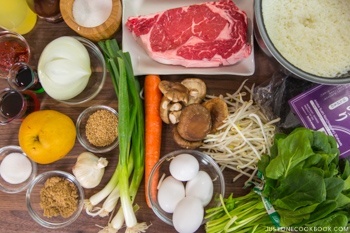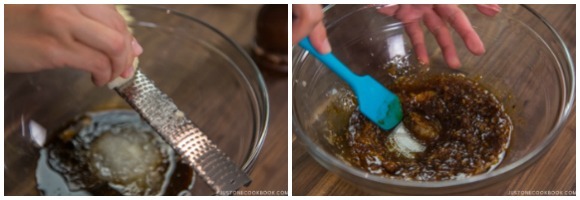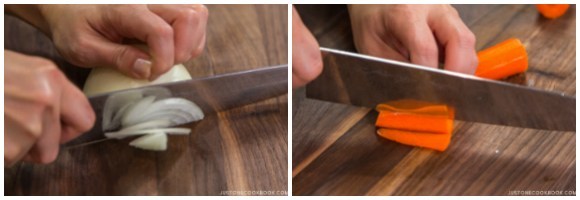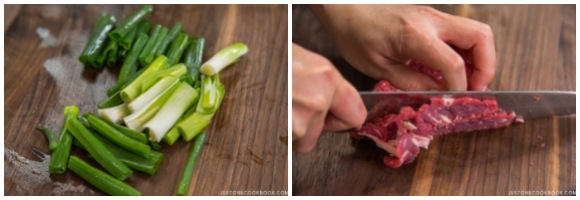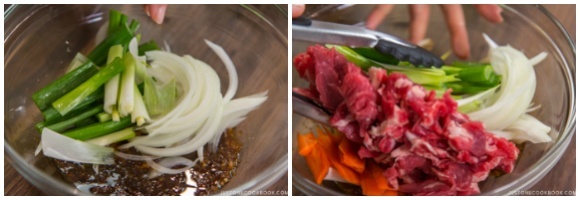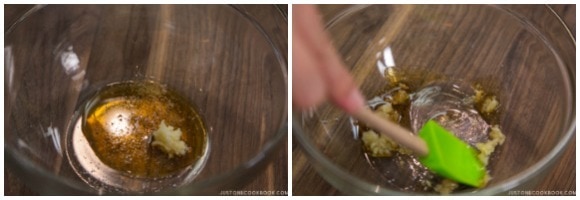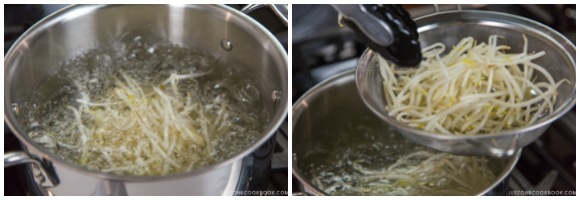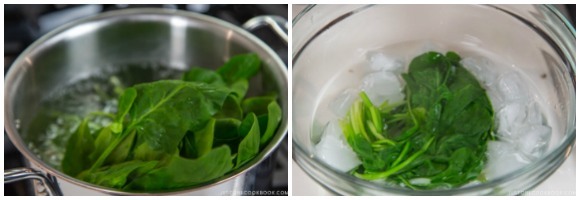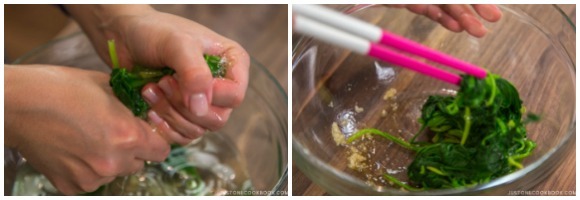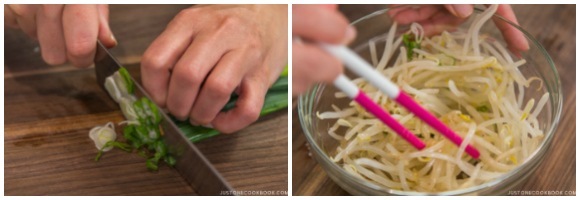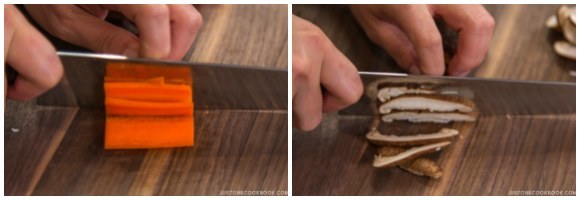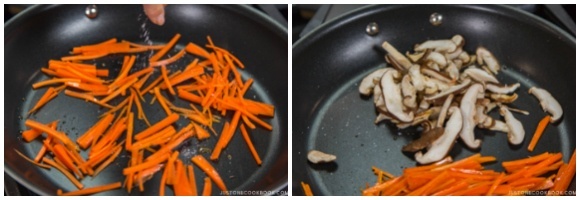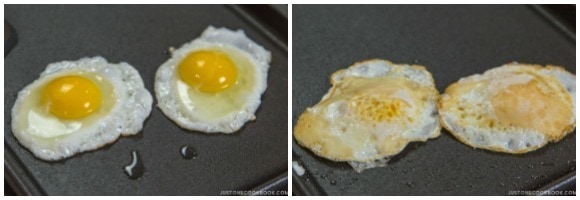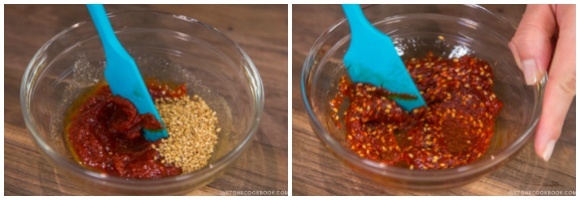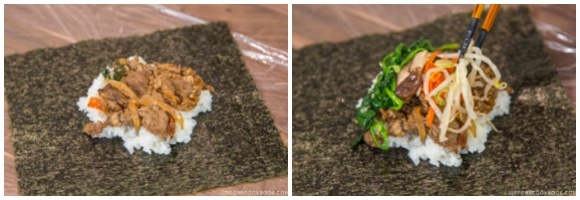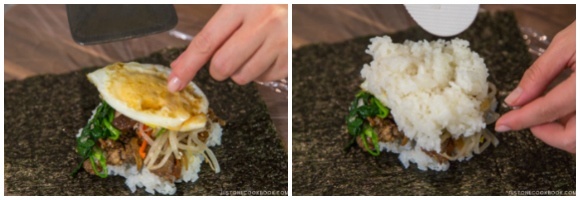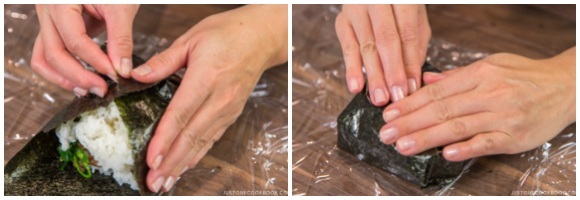If you are aware or have heard of Onigirazu (おにぎらず) – a type of Japanese rice ball, then you’re pretty current with the latest of Japanese food trends! Onigirazu was in fact one of the most influential food trends in Japan last year (2015) and today I’m making Onigirazu with Bulgogi, Korean grilled beef!
What is Onigirazu?
The name Onigirazu comes from the Japanese rice ball – Onigiri (おにぎり) or sometimes called Omusubi (おむすび). Onigiri is a great healthy choice for lunch or snacks. It is made of rice formed into the traditional triangle, round, or cylinder shape with hands. Usually, the rice ball is filled with pickled plum (umemboshi), soy sauce seasoned bonito flakes (okaka), or other kinds of fillings, and then wrapped with nori seaweed. The word “Onigiri” comes from “Nigiru“, which means to squeeze or hold tightly in Japanese. When you do NOT squeeze tightly, we say “Nigiranai” or “Nigirazu“. So Onigirazu is the rice ball (Onigiri) that is NOT squeezed tightly into the traditional shape (Nigirazu).
The Onigirazu History
Although Onigirazu became a huge trend last year, it had been introduced 25 years ago by manga artist Tochi Ueyama in his manga (Japanese comic books) “Cooking Papa“. In his food manga, the main character, a dad and salary-man, likes to cook for his family. Ueyama named this dish “Onigirazu” and introduced it in his comic books when he saw his wife making a new style of Onigiri. In fall 2014, the most popular Japanese recipe-sharing site, Cookpad, had a feature on Onigirazu recipes. Since then, this recipe was revived and it became a popular search word, especially among housewives who make their husband’s and children’s lunches.
3 Reasons Why You Should Make Onigirazu
It has 3 big appealing features that caught everyone’s attention and stayed popular.
1. More fillings; make it into a meal!
It can be stuffed with much more fillings than Onigiri. Onigiri tends to include one kind of filing, but Onigirazu usually has more than 2-3 kinds of fillings! With a main dish filling like Bulgogi and Tonkatsu, you can get carb (rice), protein (meat), and veggies (lettuce) in one bite!
2. No more mess; easy to assemble!
When you make this delicious dish, you wrap the rice with nori sheet. Therefore, you don’t have to wet your hands and form rice into a rice ball. While Onigiri takes practice and some skill to make, Onigirazu is very simple to assemble, just like a sandwich!
3. Endless creative fillings!
Most people stick with traditional filling when it comes to Onigiri because of limited filling space. However, people are very creative and put unconventional fillings in Onigirazu like ham, cheese, egg, fried chicken, and grilled meat. Onigirazu also uses various condiments like ketchup, Tonkatsu sauce, and mayonnaise for spreads which is not common for Onigiri.
5 Tips to Make Perfect Onigirazu
Tip 1. Spread the rice into a square shape
Place a nori sheet with a corner pointing up. Try to evenly spread the rice into a square shape in the center of nori. Don’t forget to leave some space around the rice for easy wrapping.
Tip 2. Put the rice and fillings in a thin layer
Make sure to place the fillings in single/thin layers and stack them on top of previous one, avoid empty spaces. When you place ingredients, think about the cross-section view after you cut in half. Work with small amount of fillings so that it’s easier to wrap.
Tip 3. Mark which side you would cut in half
If your fillings are placed in a single layer on top of another, you don’t need to worry about this tip (like lettuce, cheese, ham etc). If you place multiple ingredients, it’s important to remember which side you’d need to cut in half before you finish wrapping with nori (and can’t see inside!). In above diagram, we need to cut along the pink line so that all the fillings with different colors will be visible from cross-section. A trick to remember? Mark the cutting line with a piece of ingredient (I used a stick of carrot).
Tip 4. Flip and rest for 5 minutes
Fold each corner of nori sheet tightly around the layers of rice and fillings at the center. Wrap tightly with plastic wrap and flip over, seam side down. The steam from the rice will moisten nori sheet and bind all the ingredients well together.
Tip 5. Wet your sharp knife
Use a sharp knife to cut it in half. If you run water on your knife before cutting in half, the rice and nori won’t stick to your knife and the cross-section will be clean.
Our Family’s Favorite Bulgogi Recipe
My family loves this Bulgogi recipe that I had been cooking… but I had been using Japanese soy sauce. It tastes great, but I had never imagined it could taste even better with Korean soy sauce! When I did this last collaboration video with Seonkyoung, she gave me a bottle of Korean soy sauce. I should have bought a bottle of Korean soy sauce years ago for Korean dishes! Korean dishes taste FANTASTIC with Korean soy sauce (duh?!). Keep your Japanese soy sauce for Japanese recipes, and I highly recommend using Korean soy sauce for this recipe! To add more colors to this Bulgogi Onigirazu, I added vegetable side dishes that I use for my Bibimbap recipe. It definitely requires a bit of extra work, so you can totally skip these veggies. However, cross-section looks pretty when green and red colors pop out, and not to mention yellow fried egg! The gochujang sauce in the recipe is optional too, but we love this spicy and sweet savory sauce for my Bibimbap recipe…so again I use this sauce for this recipe. Bulgogi Onigirazu tastes perfect without the gochujang sauce.
Onigirazu Variations: Tonkatsu Onigirazu
For today’s recipe, I collaborated with my YouTuber friends, Shinichi and Satoshi from Tabi Eats ! Check out their super delicious recipe and don’t forget to subscribe to their YouTube channel! I hope you will enjoy making this Bulgogi Onigirazu recipe! If you try it, don’t forget to share your picture on Instagram, Facebook, or Twitter with #JustOneCookbook. Thank you so much for reading, and till next time! Wish to learn more about Japanese cooking? Sign up for our free newsletter to receive cooking tips & recipe updates! And stay in touch with me on Facebook, Pinterest, YouTube, and Instagram.
